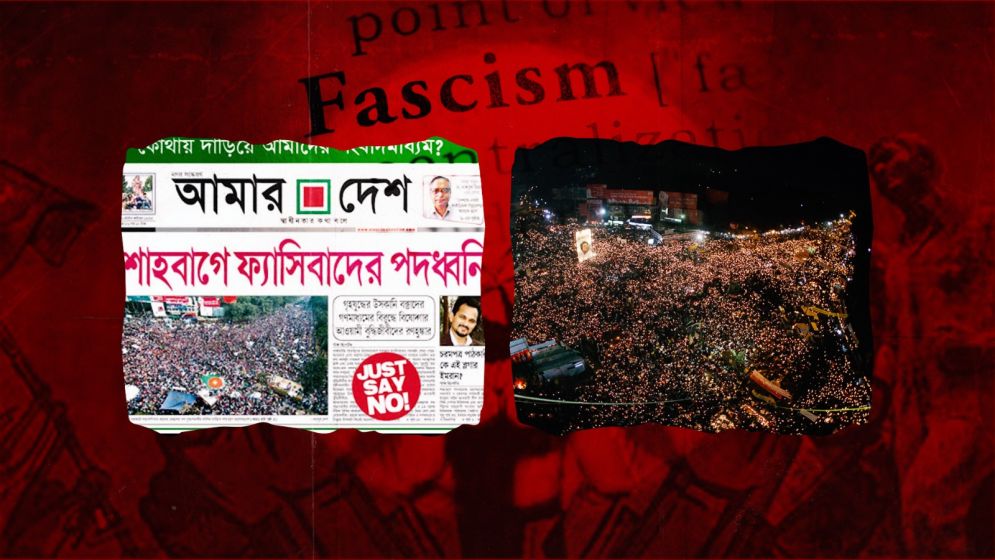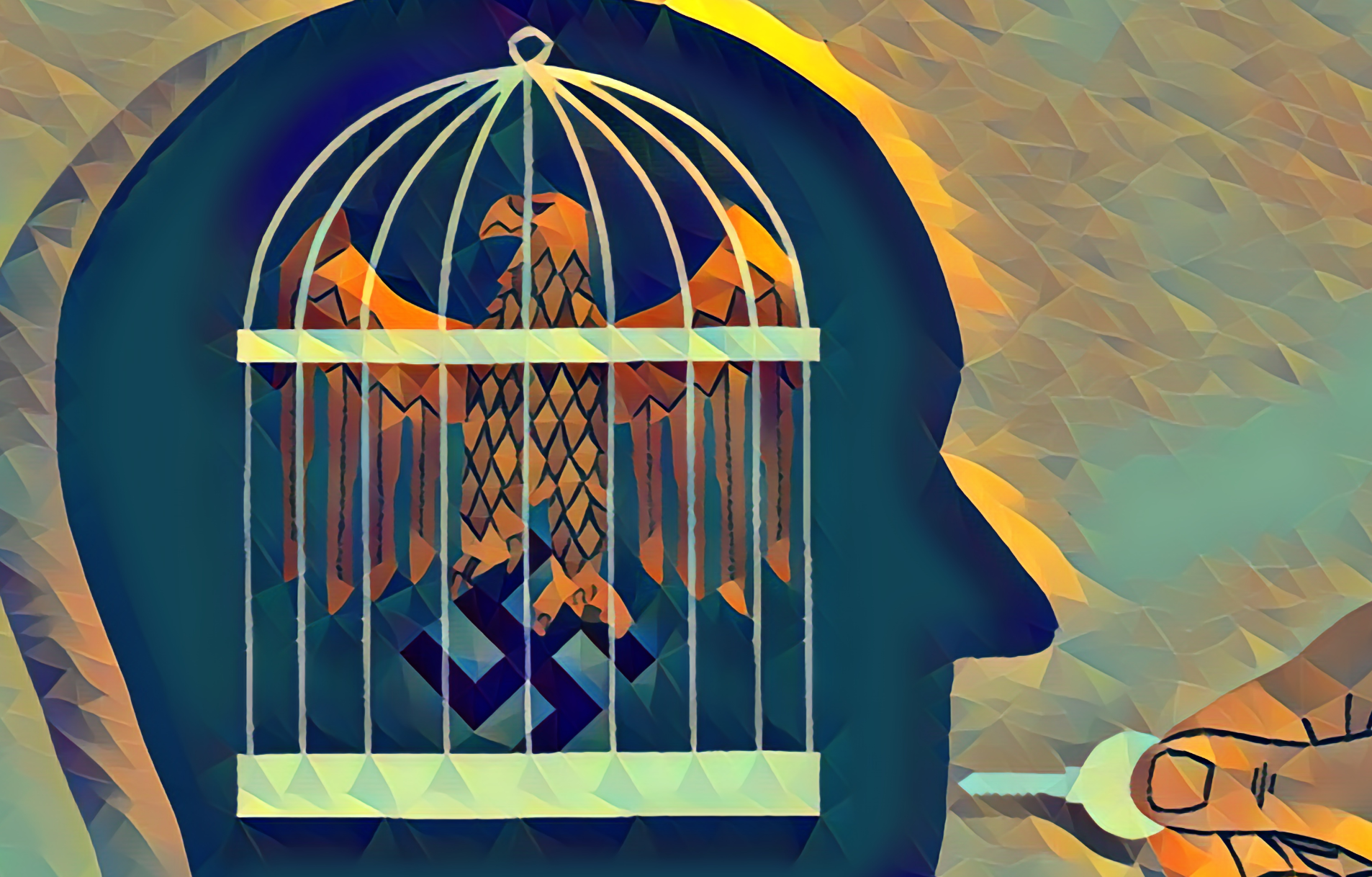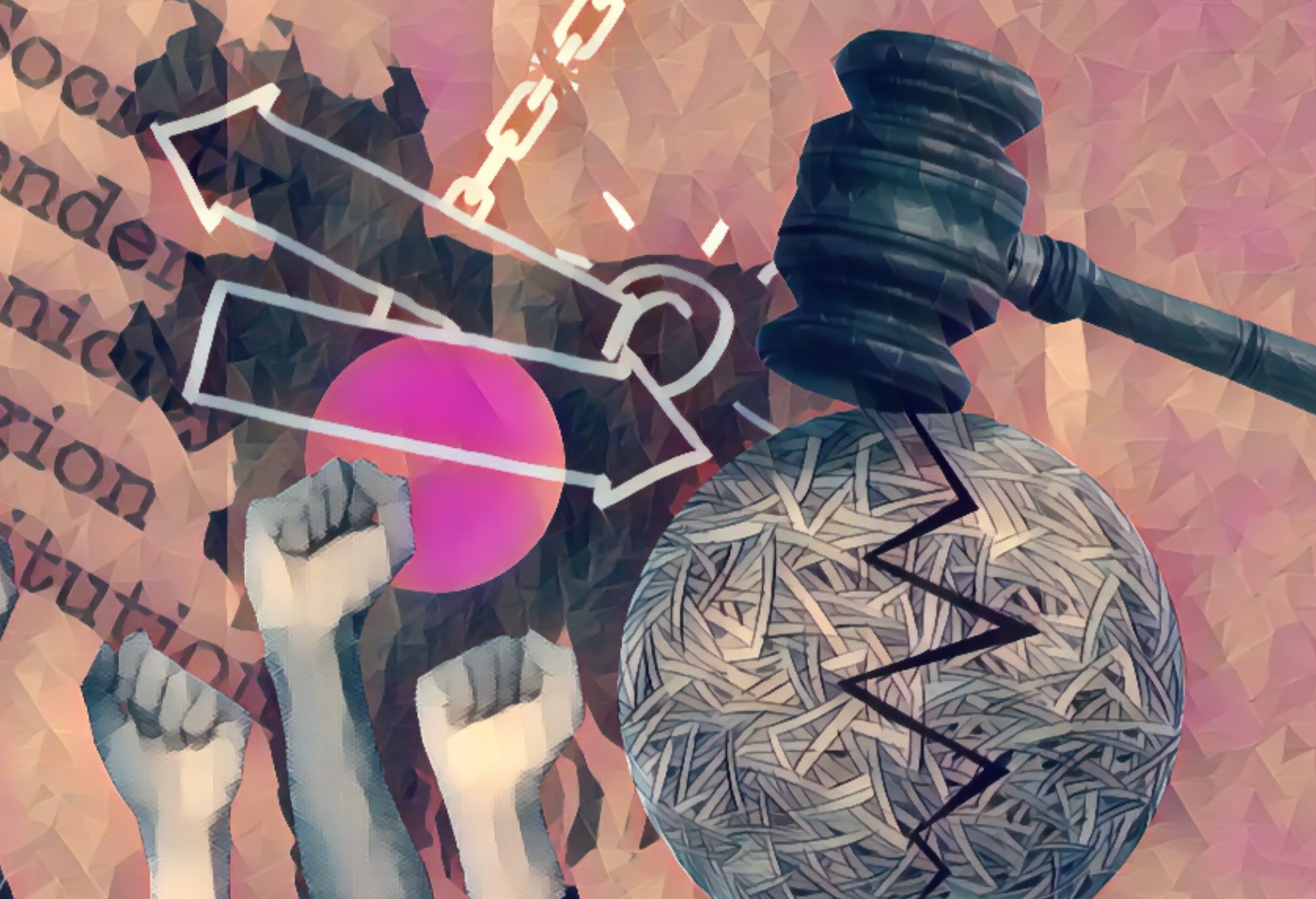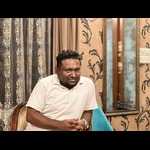
Fascism doesn't arrive overnight. It doesn't drop from the heavens or erupt spontaneously.
It is cultivated—carefully, historically—layered over time through distorted narratives, sanitized myths, and an elite intellectual consensus that cloaks control in the language of progress.
In Bangladesh, this process has been insidiously subtle and unmistakably deliberate.
The Liberation War of 1971 remains our most sacred collective memory, a moment of genuine popular resistance and sacrifice. And yet, over the decades, a narrow, politically convenient retelling has overwritten that complexity.
What was once a people’s war has been recast as an Awami League triumph, choreographed with Indian benevolence and narrated almost exclusively by a section of Indian Bengali intelligentsia.
They claim the mantle of secularism and progressiveness, but in reality, they have authored a cultural and ideological takeover wrapped in the rhetoric of humanism.
This sanitized mythos—elevated as the "spirit of the Liberation War"—has metastasized into a cultural orthodoxy. But it is an orthodoxy built not on the lived diversity of the war, but on erasure: of religious voices, of Islamic identity, and of the very people who didn’t fit the secular-progressive script.
It has bred not national unity but an intellectual monoculture that criminalizes dissent and demonizes faith.
Let’s be clear: this reengineered narrative has served two primary political objectives.
First, it attempts to forge an artificial national consciousness rooted in Indian cultural supremacy, effectively positioning Bangladesh as a satellite state within India’s cultural orbit.
Second, it weaponizes historical memory to delegitimize Islamic political identity.
Any expression of Muslim social or political agency is smeared—automatically—as Jamaat, as Hefazat, as extremism. And thus, an entire community, in all its internal diversity, is cast as anti-national, as enemies of the Liberation War, and by extension, enemies of the state.
Nowhere was this strategy more visibly enacted than during the Shahbagh movement of 2013.
What emerged as a youth-led protest was quickly co-opted into a state-endorsed frenzy—part cultural purging, part moral hysteria.
Shahbagh became the theatre in which Indian-style secular nationalism was rehearsed for export to Bangladesh, turning a generation of urban youth, media personalities, and academics into foot soldiers of a cultural project they barely understood.

Fight against Shahbaghi fascism
It was only when voices like Daily Amar Desh dared to name the specter—publishing the landmark headline "The Footsteps of Fascism in Shahbagh"—that cracks began to show in the illusion. That headline, at the time dismissed as incendiary, now reads as prescient.
And then came Shapla Chattar.
Criticize the Qawmi and Tawhidi masses all you want. Point out their flaws, their lack of political polish, their organizational inconsistencies. But understand this: the rise of Shapla Chattar was not a regression. It was a rupture.
It was the moment a different Bangladesh pushed back—against cultural hegemony, against intellectual silencing, against the slow suffocation of religious identity under the guise of secular nationalism.
It was not a rejection of the Liberation War. It was a demand to reclaim it—from those who had tried to turn it into a tool of cultural colonization.
Yet regrettably, the Islamophobic ideology that crystallized in Shahbagh hasn’t receded—it remains the mainstream current in Bangladesh's public discourse. Cloaked in the language of secularism and progressivism, Shahbagh is the cultural armature of a deeper authoritarian project.
Built upon the Indian Bengali nationalist narrative and championed by Awami League loyalists, this ideology has cast any expression of Islamic identity as backward, reactionary, or worse, treasonous.
But here’s the truth: the ones calling themselves progressives are, in practice, the most reactionary. They are the enforcers of a single narrative, intolerant of dissent, allergic to complexity.
They are not building a democratic future; they are building the intellectual scaffolding of Awami fascism.
And the media? It has internalized this narrative so deeply that it no longer reports on Shahbagh—it is Shahbagh.
The media's values, language, and moral compass are aligned with the cultural dogma born in that square. Shahbagh was not a moment; it was a shift. A realignment of state power with elite cultural authority under the guise of civil society. And it is still very much alive.
That is why a new Bangladesh cannot be born until Shahbagh is dismantled—not merely critiqued, but completely deconstructed.
If we truly reject the Awami League, reject the colonial reverence for foreign oppressors, reject the suppression of political and spiritual plurality—then we must also reject Shahbagh.
You cannot selectively oppose fascism while preserving the cultural machine that fuels it.
Some cling to a false binary: that Shapla was merely a reaction to Shahbagh. But Shapla, with all its faults and contradictions, was not part of that binary.
It was a rupture. It had no coherent political vision—indeed, some of its factions did immense damage by sanctifying Sheikh Hasina as the so-called “Qawmi mother,” thereby legitimizing the very authoritarianism they claimed to oppose.
Yet to reduce Shapla to Shahbagh’s opposite is intellectually lazy. One was spontaneous and grassroots; the other was manufactured and state-sponsored.
The truth is, there is no binary. There is only Shahbagh—and those resisting its hegemony.

Misunderstanding the faultline
Shahbagh has the institutions, the international endorsements, the media machinery, and the elite cultural capital to enforce its ideology. That’s why society keeps returning to it, like a dog to its vomit.
Because it is easier to mythologize than to confront complexity. But no society can thrive on a binary forever. And no liberation movement should be weaponized against its own people.
Even more troubling is the way the original architects of Shahbagh have reemerged in public life—unchastened, unapologetic, and somehow rehabilitated.
They called Shahbagh the "Second Liberation War." They cheered on repression, demanded that the state "crush" dissenters, and poured gasoline on an already fragile national identity.
And now? They deliver TED-style wisdom to the same public they once misled. They play revolutionaries on talk shows. They reinvent themselves as thought leaders—without ever acknowledging their complicity.
This isn’t just hypocrisy. It’s dangerous. Because these are the same voices who will, at the next convenient moment, revert to their Shahbagh instincts.
Just as many members of the Ghatak-Dalal Nirmul Committee—once fringe ideologues—rebranded themselves as the vanguard of the Shahbagh movement in 2013, many of today’s celebrated intellectuals are recycled agents of the same authoritarian logic.
What’s worse is that the very people who suffered from their ideological purges are now clapping for them.
This is the real crisis: not just of politics, but of memory. A culture that forgets its oppressors the moment they change their wardrobe is not a culture ready for liberation. It is a culture still under siege—only now, the siege comes with likes, book deals, and media acclaim.
It’s time to end the fantasy. The road to a new Bangladesh does not pass through Shahbagh. It passes through truth, accountability, and a cultural decolonization we’ve barely begun.
Let me be clear: I’m not talking about the few who had the integrity to admit their mistakes, to publicly break ranks and stand with the people. They exist—and they deserve credit.
I’m speaking of the others. The self-deceivers. The cultural engineers who actively manufactured public consent for repression, even genocide, and now parade as the moral conscience of the nation.
The very cadre who once waged a media and intellectual war against dissent are now canonized as sages of reason. Among them are figures who, despite having consumed enough books to fill five trucks, declared Shahbagh as Bangladesh’s “second liberation war.”
Today, they are lionized as towering intellectuals—quoted, awarded, revered.
But a nation that cannot distinguish friend from foe is already defeated. Why do we still tolerate these charlatans? Why cling to intellectuals who weaponized their credentials to sanctify state violence?
The truth is: Bangladesh does not need these intellectuals.
Intellectualism in this country died in Shahbagh. What we have now are animated corpses reciting dogma in polished prose. You cannot build a new future with those who served fascism and now disguise themselves as humanists.

Identifying the differences
If Bangladesh had faced its reckoning—if we had truly undergone a political rupture after August 5th—many of these figures would not be writing op-eds or teaching seminars.
They’d be answering to the public, perhaps even behind bars. Instead, they’re delivering moral sermons to the very masses they once betrayed. To hope for a better future while allowing this farce to continue is not optimism—it’s dishonesty.
Never forget: Shahbagh is the political litmus test of our time. Rub anyone against it and you will see their true character revealed. It’s not just a historical event—it is the touchstone of political integrity in modern Bangladesh.
And Shahbagh is not monolithic. It comes in forms. There are at least three distinct strains:
First, there are those who are politically anti-Shahbagh but culturally immersed in its logic.
These are the Bengali nationalist leftists who may speak of Islamic plurality on occasion, but whose literary and cultural instincts remain deeply rooted in a Calcutta-leaning secularism.
They believe themselves to be critical thinkers, but their intellectual labor only reinforces the Awami cultural project. They are anti-regime in posture, but Shahbaghi in effect.
Second, you’ll find those who are politically aligned with Shahbagh but culturally allergic to it.
Often religious, sometimes even ultra-conservative, they reject the liberal aesthetics but cling tightly to Shahbagh’s political playbook: use media, co-opt civil society, demand state violence when convenient.
They want a different cultural identity but can't seem to let go of Shahbagh’s authoritarian architecture. These are the contradictions that keep Bangladesh in crisis.
Then there’s the third and purest strain—both politically and culturally Shahbaghi. These are your militant Awami ideologues, the fully converted.
Their entire worldview is forged in the Shahbagh crucible. Call them the most dangerous. Call them cracked. Call them what they are: the zealots of this cultural order.
And finally, there is a small, often ostracized minority—those who reject Shahbagh in both form and substance.
Politically and culturally anti-Shahbagh, these are the people who, in every sense, still stand on the side of Bangladesh. They are few. They are vilified. But they are the only ones not spiritually colonized.
The rest? They are products of the same toxic milk. Some are biological offspring. Others, adopted along the way.
But make no mistake—the bloodline is the same. And the calculation is simple.
If you still wonder why fascism has found such fertile ground in this country, don’t look to the generals or the strongmen.
Look to the thinkers. Look to Shahbagh. And ask who built the stage.
—
Rezaul Karim Rony is a writer and thinker. He is the editor of Joban magazine

